If you're intrigued by the idea of growing your own fresh produce while cultivating fish in a symbiotic ecosystem, you're in the right place.
In this guide, we will discuss the intricacies of outdoor aquaponics systems. From understanding the fundamentals to designing and maintaining your own thriving setup. This blog is tailored to equip you with the knowledge and skills needed to succeed.
Benefits of Outdoor Aquaponics Systems:
- Outdoor aquaponics systems offer a sustainable approach to food production by utilizing natural processes to cultivate both fish and plants. Aquaponics require less water and energy compared to traditional farming methods.
- With proper planning and climate considerations, outdoor aquaponics systems can provide year-round harvests which allow growers to enjoy fresh produce and fish regardless of the season.
- Outdoor aquaponics systems can be designed to maximize space utilization, making them suitable for urban environments or small-scale farming operations.
- By recycling water and nutrients within the system, outdoor aquaponics minimizes water usage and nutrient runoff, thus reducing the environmental impact associated with conventional agriculture.
- Outdoor aquaponics systems provide valuable educational opportunities for individuals of all ages to learn about ecology, biology, and sustainable agriculture.
- Growing food in an outdoor aquaponics system ensures access to fresh, nutrient-dense produce and fish free from harmful chemicals and additives, promoting healthier diets and lifestyles.
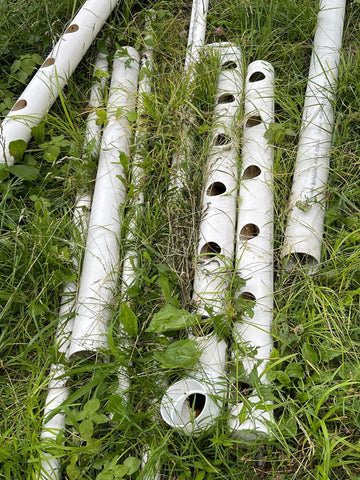
Components of an Aquaponics System
1. Fish Tank: The fish tank house the fish that is responsible for generating nutrients essential for plant growth. Usually fish such as tilapia, trout, or catfish are raised in the tank.
2. Grow Beds:Grow beds are containers filled with a grow media, such as gravel, clay pebbles, or lava rock, where plants are cultivated. These beds are usually positioned above or beside the fish tank to allow gravity to facilitate the flow of nutrient-rich water from the fish tank to the plants.
3. Pump System: A pump system is used to circulate water between the fish tank and grow beds, ensuring a continuous flow of nutrients to the plants. The pump transfers water from the fish tank to the grow beds, where it nourishes the plants, and then returns to the fish tank as clean and filtered water.
4. Plumbing: The plumbing connects the various components of an aquaponics system and regulates the flow of water. Pipes, valves, and fittings are used to create a network that directs water from the fish tank to the grow beds and back again.
Choosing the Right Location for Your Outdoor Aquaponics System
1. Sunlight Requirements
When selecting a location for your outdoor aquaponics system, it's essential to consider sunlight requirements for both the plants and the fish. Most plants require at least 6-8 hours of direct sunlight each day for optimal growth. So, choose a spot that receives enough sunlight throughout the day and avoid areas shaded by buildings, trees, or other structures. Consider also the angle of the sunlight throughout the seasons to ensure consistent light exposure for your plants.
2. Climate Considerations
The climate of your region plays a crucial role in the success of your outdoor aquaponics system. Consider factors such as temperature, humidity, and precipitation patterns when choosing a location. Select a site that offers a climate conducive to the species of fish and plants you intend to grow. Some plants may require specific temperature ranges or protection from frost, while certain fish species thrive in warmer or cooler waters. If you live in an area with extreme weather conditions, such as high winds or heavy rainfall, you may need to use protective measures or adjust your system accordingly.
3. Space and Accessibility
Evaluate the available space and accessibility of the potential locations for your outdoor aquaponics system. Choose a site that provides enough room for the desired size of your system, including fish tanks, grow beds, and walkways. Additionally, ensure easy access to water sources, electricity and supplies for maintenance and monitoring. Accessibility is key to efficient operation and regular maintenance of your outdoor aquaponics system.
Designing Your Outdoor Aquaponics System
A. System Layout
The layout of your outdoor aquaponics system plays a critical role in its functionality and efficiency. Consider factors such as available space, sunlight exposure, and accessibility when designing the layout. Common outdoor aquaponics system layout designs include:

1. Media Bed System:
- In this design, plants are grown in media-filled beds where the water from the fish tank is pumped and circulated through.
- The media beds can be arranged in a linear fashion or in a series of tiers for vertical space utilization.
- Fish tanks are typically positioned at ground level or slightly elevated to allow gravity-fed water flow to the media beds.
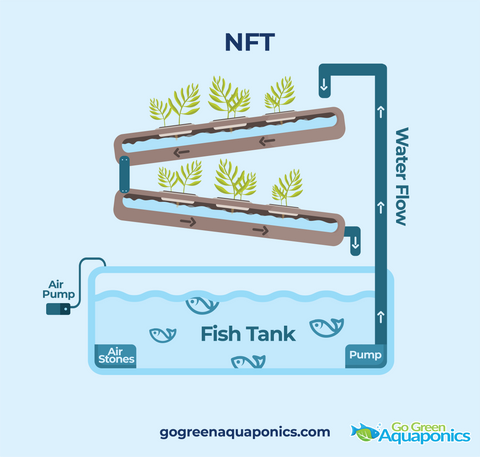
2. Nutrient Film Technique (NFT):
- NFT systems involve shallow channels or tubes where water containing fish waste flows continuously past plant roots.
- Plants are typically grown in small pots or trays with their roots dangling into the nutrient-rich water.
- NFT systems are often arranged in a horizontal manner, with channels set at a slight angle to facilitate water flow.

3. Raft System or Deep Water Culture (DWC):
- DWC systems involve suspending plant roots directly into a nutrient-rich water reservoir, often using floating rafts or beds.
- The fish tank is usually positioned at one end of the system, with water continuously circulated to the plant beds and back to the tank.
- DWC systems can be arranged in a linear layout or configured in circular tanks for efficient use of space.
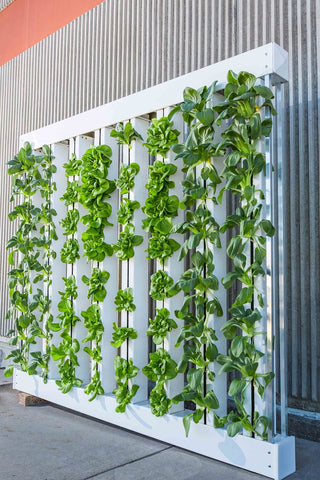
4. Vertical Tower Systems:
- These systems utilize vertical towers or columns where plants are grown in pockets or trays, with water circulated from a central fish tank.
- Vertical towers can be freestanding or attached to a supporting structure, such as a wall or frame.
- This design maximizes space utilization, making it suitable for areas with limited horizontal space.
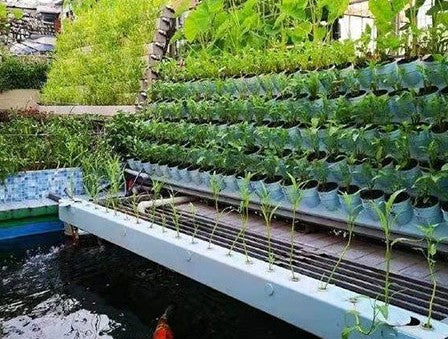
5. Hybrid Systems:
- Many aquaponics setups combine elements of different designs to optimize performance and adapt to specific environmental conditions.
- For instance, a system might incorporate media beds for larger plants like tomatoes, while utilizing NFT or DWC for smaller herbs or leafy greens.
- Hybrid systems allow for flexibility and customization based on available resources and production goals.
B. Sizing the Components
Proper sizing of components is crucial for the functionality and productivity of your outdoor aquaponics system. Consider the following factors when determining the size of each component:
- Fish Tank Size: Choose a fish tank size that accommodates the desired species and quantity of fish. Calculate the tank volume based on the biomass of fish you plan to grow and ensure adequate space for fish growth and movement.
- Grow Bed Size: Determine the size and number of grow beds based on the types of plants you intend to grow and the available space.
- Pump Capacity: Select a pump with sufficient capacity to circulate water effectively throughout the system, ensuring proper nutrient distribution to plants and adequate oxygenation for fish.
- Plumbing Size: Choose the appropriate plumbing components, such as pipes and fittings, based on the flow rate and water volume requirements of your system. Properly sized plumbing helps maintain optimal water flow and prevents clogs or restrictions.
C. Materials and Construction
Selecting durable materials and proper construction techniques is essential for the longevity and stability of your outdoor aquaponics system. Consider the following tips:
- Choose materials that are resistant to water, corrosion, and UV damage, such as food-grade plastics, fiberglass, or treated wood.
- Ensure proper sealing and waterproofing of components to prevent leaks and water loss.
- Follow the recommended construction guidelines and safety protocols when assembling the system to ensure structural integrity and minimize risks.
- Regularly inspect and maintain the system to identify and address any issues promptly, extending its lifespan and performance.
D. Incorporating Aesthetic Elements
While the main goal in setting up your system is functionality, incorporating aesthetic elements can enhance the visual appeal of your aquaponics system. Below are ideas for incorporating the aesthetic of your outdoor system.
- Choose attractive plant varieties and arrange them in visually appealing patterns or combinations.
- Incorporate decorative elements such as rocks, driftwood, or statues to add interest and texture to the design.
- Integrate the aquaponics system into existing landscaping features or outdoor living spaces to create a seamless transition between functional and recreational areas.
- Experiment with creative design elements, such as vertical gardens, trellises, or raised planters to add vertical interest and maximize space utilization.
By being creative, you can create an outdoor aquaponics system that not only produces bountiful harvests but also enhances the beauty and sustainability of your outdoor space.
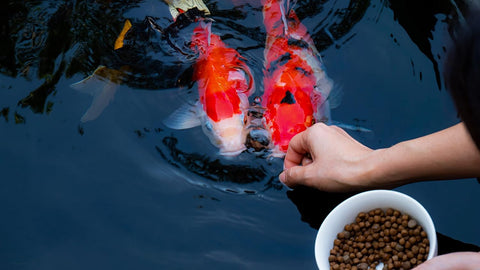
Selecting Fish and Plants
1. Fish Species Suitable for Outdoor Aquaponics
When choosing fish species for your outdoor aquaponics system, consider factors such as climate suitability, water temperature tolerance, and compatibility with the plants you intend to grow. Some popular fish species suitable for outdoor aquaponics include:
- Tilapia:Tilapia is a hardy and fast-growing fish species that thrives in warm water temperatures. It is well-suited for outdoor aquaponics systems in temperate climates.
- Trout:Trout prefer cooler water temperatures and are suitable for outdoor aquaponics systems in colder regions or during cooler seasons.
- Catfish:Catfish are adaptable fish species that can tolerate a wide range of water conditions and temperatures. They are commonly raised in outdoor aquaponics systems.
- Perch: Perch is another cold-water fish species that can thrive in outdoor aquaponics systems, especially in cooler climates.
- Koi or Goldfish:Koi andgoldfish are ornamental fish species that are popular choices for outdoor aquaponics systems due to their colorful appearance and ease of care.
2. Plant Options
The selection of plants for your outdoor aquaponics system depends on various factors, including climate, available space, and personal preferences. Here are some popular plant options that thrive in outdoor aquaponics systems:
- Leafy Greens: Lettuce, kale, spinach, and Swiss chard are excellent choices for outdoor aquaponics systems, as they require relatively little space and grow well in a variety of climates.
- Herbs:Basil, cilantro, parsley, and mint are flavorful herbs that thrive in outdoor aquaponics systems and can be harvested continuously for culinary use.
- Tomatoes: Tomatoes are versatile plants that produce abundant fruit in outdoor aquaponics systems with ample sunlight and support structures for vine growth.
- Peppers: Bell peppers, chili peppers, and sweet peppers are heat-loving plants that thrive in outdoor aquaponics systems during warmer seasons.
- Strawberries:Strawberries are a popular fruit crop that can be grown in outdoor aquaponics systems, providing fresh berries throughout the growing season.
- Flowers and other ornamental plants: You can also grow flowers and other plants in your outdoor aquaponics system.
Setting Up and Cycling Your System
A. Water Quality Parameters
Monitoring and maintaining water quality parameters is crucial for the health and success of your outdoor aquaponics system. Key water quality parameters to consider include:
- pH Level: The pH level of the water affects nutrient availability to plants and the overall health of fish. Aim for a pH range between 6.8 and 7.2, which is suitable for most aquaponics systems.
- Ammonia Levels: Ammonia is produced by fish waste and decomposing organic matter. Monitor ammonia levels regularly, aiming for levels below 0.5 parts per million (ppm) to avoid toxicity to fish.
- Nitrite Levels: Nitrite is a byproduct of the nitrogen cycle and can be harmful to fish at high concentrations. Keep nitrite levels below 1 ppm by ensuring proper nitrification processes are established in the system.
- Nitrate Levels: Nitrate is the end product of the nitrogen cycle and serves as a nutrient source for plants. Monitor nitrate levels and maintain them within the optimal range for plant growth, typically between 10 and 150 ppm.
- Temperature: Water temperature affects the metabolism and growth rates of both fish and plants. Monitor water temperature regularly and aim to maintain it within the optimal range for the species in your system.
- Dissolved Oxygen: Adequate dissolved oxygen levels are essential for the health and well-being of fish and beneficial bacteria. Ensure proper aeration and water circulation to maintain oxygen saturation levels above 5 ppm.
B. Cycling Process
Cycling your outdoor aquaponics system is a critical step in establishing a stable and balanced ecosystem. System cycling process involves establishing beneficial bacteria colonies that convert toxic ammonia produced by fish waste into less harmful nitrites and nitrates. Here are the two methods of cycling your system:
1. Cycling with fish
Cycling with fish is the old method of cycling new aquaponics systems and can take 25-40 days. It is because the nitrifying bacteria grow relatively slow in this method.
Steps on Cycling with Fish
- Start fish cycling by adding a few fish to the fish tank. Add only a few fish because too many fish will cause the ammonia levels to spike and will be harmful to the fish.
- Once your fish are in, feed them lightly to start producing waste and start the cycle.
- Monitor the ammonia, nitrite, and nitrate levels daily to ensure they did not get too high. If the ammonia level is more than 3.0 ppm, you will have to do a partial or complete water change to avoid an ammonia spike. Ammonia should remain below 3.0 ppm, nitrite below 1.0 ppm, and the nitrate level should increase over time.
- Continue monitoring ammonia, nitrite, and nitrate levels and replacing the water as needed until your fish tank is fully cycled. Your aquaponics system is fully cycled when your ammonia and nitrite levels remain below 0.25 ppm.
2. Fishless Cycling
Fishless cycling has become the most popular method of cycling, a new aquaponics system today. It takes a few days and offers more advantages over cycling with fish. First, the grower and the fish will endure less stress while cycling. Second, there are no fish involved in the process, so you don't need to be overly concerned when ammonia, nitrite, and pH levels go up.
Sources of Ammonia for Fishless Cycling
- Liquid Ammonia:.
- Ammonium Chloride (Crystallized Ammonia)
- Urine:
- Dead Fish
Steps of Fishless Cycling
- When your aquaponics system is ready, begin by adding an ammonia solution a little at a time to the fish tank until your reading from the ammonia test is -5 ppm.
- Record the amount of ammonia it took to reach the -5 ppm and then add that amount daily until the nitrite appears at 0.5 ppm.
- Once nitrites appear, cut back the daily dose of ammonia into half of the original volume.
- Once nitrates appear at 5 - 10 ppm and nitrites have dropped to zero, your system is fully cycled, and you can start adding your fish.
C. Monitoring and Adjusting Water Quality
Regular monitoring and adjustment of water parameters are essential for maintaining a healthy and productive outdoor aquaponics system. Develop a monitoring schedule and follow these guidelines:
- Test Water Parameters: Use water testing kits to monitor pH, ammonia, nitrite, nitrate, temperature, and dissolved oxygen levels regularly, ideally weekly or bi-weekly.
- Record Observations: Keep detailed records of water test results, plant growth, fish behavior, and any changes or abnormalities observed in the system.
- Adjust Feed Rates: Monitor fish feeding rates and adjust accordingly based on water quality parameters and fish behavior. Overfeeding can lead to elevated ammonia levels and water quality issues.
- Maintain System Components: Regularly inspect and clean system components such as filters, grow beds, and plumbing to prevent clogs and ensure efficient operation.
- Respond to Changes: Respond promptly to any changes or fluctuations in water quality or system performance by making necessary adjustments to feeding, water circulation, or nutrient supplementation.
Troubleshooting Common Issues
- Water Quality Problems: If water quality parameters are out of balance, such as high ammonia or nitrite levels, perform water tests to identify the cause. Adjust feed rates, increase aeration, or perform partial water changes to restore water quality.
- Equipment Malfunctions: If pumps, filters, or other equipment malfunction, inspect for damage or blockages and repair or replace as needed. Regularly maintain and clean equipment to prevent issues.
- Plant Health Issues: Address plant health issues such as nutrient deficiencies, pests, or disease promptly. Adjust nutrient levels, introduce beneficial insects, or use organic treatments to control pests and promote plant health.
- Fish Health Problems: Monitorfish for signs of stress, disease, or injury. Quarantine sick fish and treat with appropriate medications as needed. Ensure proper water quality and nutrition to support fish health and immunity.
- Environmental Factors: Consider environmental factors such as temperature fluctuations, sunlight exposure, and weather conditions that may affect system performance. Implement protective measures or adjust system components to mitigate environmental stressors.
Conclusion
Outdoor aquaponics is a rewarding way to grow fish and plants in your own backyard. By combining aquaculture and hydroponics, you can produce fresh, healthy fish and vegetables while promoting sustainability and water conservation. Hopefully, this guide has equipped you with the essential knowledge to plan, set up, and maintain your own outdoor aquaponics system. Remember, the journey is as enriching as the harvest. Embrace the learning process, be observant of your system, and don't hesitate to adapt and experiment as you gain experience.






Leave a comment (all fields required)